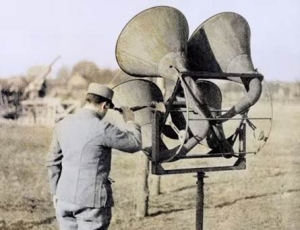War Work rests on contemporary archive films shot in a variety of locations in Great Britain, France and Germany. By simultaneously composing the music and the montage of images, Michael Nyman questions everything that has been erased from our memories: the unknown soldiers, or that which has never been recovered – identities without bodies. Nyman brings all of this back to life. He reaches back to the ideas of the Dadaist movement, when battlefields provided inspiration and an absurd vocabulary. Nyman also draws from other sources, having been greatly influenced by the heart-rending writings of August Stramm, who was one of the earliest German expressionists and died at the front in 1915.
Although the author of numerous instrumental, orchestral, and theatrical works, it is without a doubt the cinema which has made Michael Nyman’s distinctive style so widely known: minimalism mixed with borrowings from classical music and the textures of rock. He wrote the scores for Peter Greenaway’s mythic films Murder in an English Garden (1982) and Zoo (1985) as well as for Jane Campion’s The Piano Lesson. It is therefore not surprising that his commemoration of the one hundredth anniversary of the First World War should take the form of a vast visual and musical fresco.
War Work in more detail…
The 'Eight Songs' are essentially a song cycle presented in two groups of 4: the first group preceded by 4 instrumental movements and the second by 6. The texts were written by World War 1 poets all of whom, apart from the English painter-poet David Bomberg, lost their lives during the war.
The songs take their starting point from the title of a series of poems by the French poet Gaston de Ruyter (who was shot down in his planes as late as 7 October 1918): ‘Chansons vieilles sur d’autres airs’ (‘Old songs to other tunes’). The ‘chansons vieilles’ are the poems by English, French, German and Hungarian poets (all sung in their original languages apart from ‘Csak Egy Eiszkara…..’ and the ‘autres airs’ are by English, French, German, Austro-Hungarian, Polish and Italian composers of the 17th and 19th centuries:
Song 1. Urtod, August Stramm (1874-1915): Rossini, Petite Messe Solenelle, Kyrie
Song 2. What’s left of the Soldier-man, David Bomberg (1890-1957): Beethoven, Violin Concerto, second movement.
Song 3. Kinder vor einem Londoner armenspeise Haus, Ernst Stadler (1883-1914): Orlando Gibbons, The Lord of Salisbury his Pavin and Galiardo
Song 4. Haidekampf, August Stramm: Schubert, Sonata No. 15 in B flat, second movement.
Song 5. L’Adieu du cavalier/The Cavalier’s Farewell, Guillaume Apollinaire (1880-1918): John Bull, Bull’s Goodnight.
Song 6. For just one night, Geza Gyoni (1884-1917) (in an English translation by Watson Kirkconnell of Csak Egy Ejszkar)
Chopin, Prelude No.15 in D flat, middle section
Song 7. Louse Hunting, Isaac Rosenberg (1890-1918): Cesar Franck, Violin Sonata No.1 in A, first movement
Song 8. Abschied, Alfred Lichtenstein (1889-1914). Schubert, Sonata No. 15 in B flat, second movement.
The ‘film' has been designed mostly around footage selected from the French, German and US WW1 film archives that were (financially) available to me and my editor, Max Pugh. There are two significant references, neither of which attempt to define the work. On the one hand, when I first saw the archive film I was immediately and inevitably reminded of the 1920s silent films I have written scores for (after all Paul Strand’s ‘Manhatta’ and Vertov’s ‘Sixth Part of the World’, let alone ‘Battleship Potemkin’, were made less that 10 years after a lot of this war footage was shot. And on the other hand certain aspects of the War Work film relate, maybe distantly, to the Body-as-Machine (or non-machine) in my operas ‘The Man who Mistook his Wife for a Hat’, ‘Facing Goya’ and ‘Love Counts’ and my song cycles ‘Body Parts Songs’ and ‘I sonetti lussuriosi’.
Michael Nyman 2014





